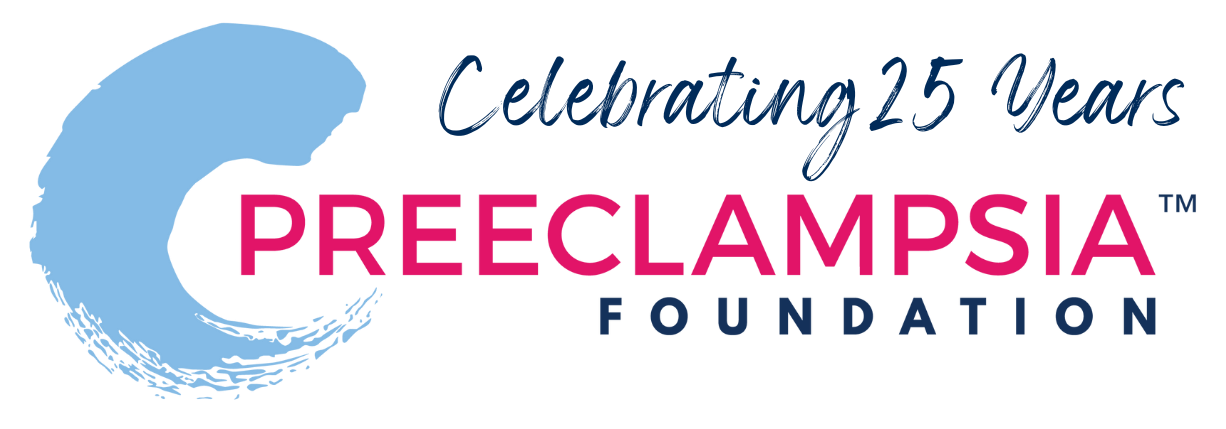
New Study Reveals Key Genetic Markers for Preeclampsia, Paving Way for Biomarker Development for Preeclampsia
Preeclampsia is a life-threatening hypertensive disorder, affecting 2%–5% of pregnancies, that remains poorly understood. In a recent study published by Physiological Genomics that was partially funded by the Preeclampsia Foundation's Peter J. Pappas Grant, Drs. Lucia Carbone and Kent Thornburg and their team analyzed DNA methylation from buccal swabs from mothers who experienced early and late-onset preeclampsia and those with uncomplicated pregnancies, along with their children. The study, which won the American Physiological Society's Select Award in March 2024, also found that there are epigenetic differences between early and late-onset preeclampsia pregnancies. All of these findings point to the fact that there may be different epigenetic changes that underlie various types of preeclampsia.
We sat down with Drs. Carbone and Thornburg to talk further about this study and what it means for our understanding of preeclampsia.
Your study starts with a basic understanding of what the epigenome is. Can you explain what the epigenome is and what it does?
Our DNA is a combination of letters (letters ATGC are referred to as bases) and their ‘sequence’ will determine the genetic code, which contains the instructions for producing proteins, the building blocks of our cells. The epigenome is the sum of chemical changes that modify whether genes are “turn off or on.” It does not modify the sequence of the four bases per-se but it adds some chemical modifications to it, which will determine when and where in the body each gene needs to be active and generate proteins. If the DNA is the music sheet, the epigenome is the director of the orchestra – telling the body when and where it needs to take action.
Why does our epigenome matter with diseases like preeclampsia?
In the same way in which our DNA can get ‘mutated’ and such mutations alter the proteins, and this might result in disease, the epigenome can also change the way genes work and make people vulnerable for disease. In fact, the epigenome is more flexible than the genome. Environmental factors (e.g., smoke, diet, exercise, drugs) can cause some reversible and/or permanent changes that might also lead to diseases. Our hypothesis has been that changes in the epigenome in correspondence of specific genes might be associated with the hypertensive disease of pregnancy called preeclampsia.
What does methylation mean, and how does it impact how the body responds to conditions like pregnancy?
DNA methylation is the addition of a ‘methyl’ group (a carbon molecule with three hydrogens attached) to the DNA. In humans, this addition happens in correspondence of the bases, cytosines followed by guanines (CpG). When DNA is highly methylated, it is usually inactive, meaning that the genes will not be stimulated to generate any protein. In conditions like pregnancy and some diseases, like cancer, DNA methylation might change and therefore alter the way in which genes are regulated. These changes can be permanent or reversible.
Why does understanding what causes preeclampsia matter?
Preeclampsia is a hypertensive disorder during pregnancy that can be deadly and might have some long-term repercussion on the mother and the baby she is carrying. Yet, the causes of this disease are unknown. If we can understand which genetic and epigenetic factors increase risk for this disorder, we might be able to screen pregnancies more efficiently and possibly treat the mothers early on.
For researchers reading this study, where does it suggest the next line of inquiry into the origins of preeclampsia needs to go?
The next study needs to determine the degree to which these methylation changes are found in women before they get pregnant. Our study show highly significant methylation changes in DNA in women who had preeclampsia but did not tell us whether the epigenetic effect was caused by disease or whether the changes were likely to have caused the disease. This could have profound implications for understanding the origins of PE. That study, which should be done next, will require a larger number of subjects and a larger budget to include non-pregnant women at risk and compare the epigenetic profiles of those who get preeclampsia vs those who do not.
Anything else you'd love for our audience to know about your work?
This study found that gene-specific regions of DNA were much more highly methylated than found in non-preeclamptic mothers (controls) and, in many cases, some regions were much less methylated than DNA from controls. Many of the associated genes discovered in this study are known have powerful effects in regulating the processes in making the placenta and others in the regulation of lipids. It is well known that both abnormal placentas and elevated blood lipid levels are associated with preeclampsia. This study gives us a baseline for future studies that will be more extensive.
Link: https://journals.physiology.org/doi/abs/10.1152/physiolgenomics.00058.2023
Citation: Layman, C. E., Ward, S., Davis, B. A., Nevonen, K. A., Okhovat, M., Rincon, M., Valent, A., Carbone, L., & Thornburg, K. L. (2024). High-throughput methylome analysis reveals differential methylation for early and late onset preeclampsia for mothers and their children. Physiological Genomics, 56(3), 276–282. https://doi.org/10.1152/physiolgenomics.00058.2023
Related Articles

Your story is needed to improve outcomes for moms like you. Add your voice to critical preeclampsia research to ensure that every story is heard.

Frequently asked questions about the Preeclampsia Registry, a patient-driven registry and biobank.

The Preeclampsia Foundation offers research funding, study recruitment, and other patient engagement services to researchers.

We provide research grant funding to advance progress towards detection, prevention, or treatment of preeclampsia, HELLP syndrome, and other hypertensive disorders of pregnancy.

Hypertensive disorders of pregnancy significantly increase your risk of developing long-term heart problems. A careful review of blood pressure elevations during and after pregnancy may assist in iden...

Hypertensive disorders of pregnancy (HDP) can affect different groups of women in different ways, and even though we know this happening, we don't fully understand why. There are many factors, like bi...

There is growing evidence that studies examining pregnancy and its complications need to start early within the pregnancy to fully understand the nature of preeclampsia. Key gestational milestones, wh...

It is known that chronic hypertension and high BMI (body mass index) are risk factors for hypertensive disorders of pregnancy (HDP). Studies documenting this risk have usually assessed blood pre...

Several biomarker tests are under development to predict or diagnose preeclampsia. While none of these tests are yet widely accepted in U.S. clinical practice, two FDA-approved tests are available in...



